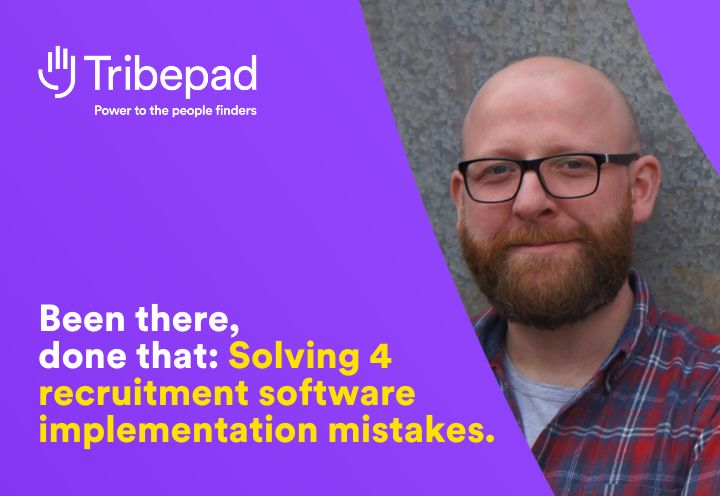When was the last time you went on Facebook? Or Instagram? Twitter? LinkedIn? Reddit, even? There’s a good bet the answer is in minutes and hours, not days and weeks.
These social media platforms are woven into the fabric of modern life. And yet, many SMEs still aren’t leveraging social media for recruitment. In this article we’ll unpick why that’s happening – and how to overcome these roadblocks.
Why should SMEs use social media for recruitment?
Let’s recap why social media is a fantastic channel for hiring. Then we’ll talk about the challenges that hold many SME recruiters back.
- Grow reach for less: Tap into millions of people where they already hang out online. With granular targeting and flexible budgets, social media advertising can be a cost-effective sourcing and attraction strategy for SMEs.
- Access passive talent: Passive candidates probably don’t spend much time on job boards. Social media can help you access and build relationships with people longer-term, to build your talent pipeline.
- Future-proof your talent attraction. A recent study found a generational shift in how people look for career opportunities, with 68% of Gen Z using social media to plan their careers. Social media recruitment is a must-have strategy as the workforce demographic changes, especially for entry-level and grad hiring.
- Strengthen your employer brand. Social media is a fantastic tool for building your employer brand, showing candidates why an opportunity with you is worth applying for. That’s critical for SMEs who typically lack the brand awareness of larger organisations. A strong employer brand helps you improve quality of hire – attracting more, better-fit people.
- Improve ED&I. Social media gives you a pathway to reach underrepresented communities you might not find elsewhere, using targeted groups, interest-based ads, and hashtags. It’s a great way to boost diverse talent attraction.
- Make data-driven decisions. Social media platforms have great in-built engagement analytics, so you can better understand the messaging that resonates with your audience. The better you know who you’re trying to attract, the more successfully you’ll attract them.
- Decrease dependency and spread risk. The fewer sourcing channels you rely on, the greater the risk if external channels make changes. By diversifying your sourcing strategy, you spread risk – so you’re less susceptible to changes outside your control.
None of this is probably news to you though. In our experience, most recruiters aren’t neglecting social because they don’t see value. It’s more complex than that.
So let’s talk about five roadblocks you might be facing in getting started, with actionable guidance to start overcoming those challenges.
What stops SME recruiters harnessing social media – and how to overcome those challenges?
Here are the five major roadblocks we see stopping SME recruiters harnessing social media for recruitment.
1. Limited bandwidth
You’re already wearing a million hats. Carving out time can feel like a luxury you don’t have. Especially if you don’t already have heaps of social experience, the learning curve can feel like a mountain you don’t have time to climb.
Tackle it:
- Start small. You don’t need to instantly become a social media maestro. Choose one platform and set a manageable workload. Don’t let perfection be the enemy of progress.
- Use templates. There are heaps of free or inexpensive resources that can speed-up the practical elements of social media recruitment. Use what’s out there!
- Batch and schedule. Block time once/week to draft the week’s posts, then schedule them using a tool like Hootsuite. Social media recruitment feels more manageable when it’s batched not bitty.
2. Budget constraints
You’re a rare recruiter if you’re not under budget pressure right now. (“Budget? What budget?” is a familiar refrain for SME recruiters…) Small budgets raise the stakes for demonstrable returns. If you’re not confident you can tie your social activity directly to hiring outcomes, it’s hard to justify spend.
Tackle it:
- Again – start small. Allocate a small amount of budget behind a single well-crafted job post, to start building some confidence (or working out what’s going wrong). Monitor and refine click-throughs and applications at a small scale before building your case for more social media budget.
- Use free analytics. Again, make use of the free resources out there. Add UTM parameters when you’re sharing jobs, for example, and use Google Analytics to see what’s working. Depending on your ATS, you should also have comprehensive reporting included and integrated, so you can see ROI paying off.
- Use a ‘test-first’ strategy. In software engineering, the concept of ‘test first’ means building things that are inherently testable, so you already know how you’ll assess whether they work. Leverage the same principles with your social media recruitment: how will you know if it’s working? Is everything you’re doing provable? For example, tracking applicant source will show social media ROI clearly, versus harder-to-measure benefits like brand building.
Get inspired: See how Richmond and Wandsworth Council used social media to hire for one of their toughest roles.
3. Lack of brand strategy
Yes, social media can be a great strategy for building your employer brand. But that’s only true if you’ve actually codified the brand you want to build.
Without a clear EVP, employer brand strategy, and brand voice, social activity risks joining the background noise. But finding time for these strategic step-back activities can be a hurdle.
Tackle it:
- Create a simple brand guide. Building your employer brand needn’t be a huge project. Any thought here is better than no thought. Define your basic visual and narrative identity, then stick to it. Even if it changes in the future, it’ll give consistency to your activity right now.
- Define content themes. You’ll typically see better results from social media recruitment when you balance value-add content with ‘value-take’ content, rather than endlessly posting job ads. A little upfront thought into the content ‘buckets’ you’ll rotate through can make this a heap easier.
- Repurpose existing content: You don’t need to create everything from scratch. Turn your careers page, job descriptions, or existing blog posts into bite-size social content. Don’t reinvent the wheel when you don’t need to.
4. Over-reliance on traditional channels
SME recruiters are the pioneers of better recruitment within the organisation – and often the only voice promoting change.
If careers fairs, referrals, and/or niche industry boards have “always worked,” experimenting with something new can be a tough sell. Even if you know the writing’s on the wall for these traditional approaches.
Tackle it:
- Evangelise long-term vision. Business leaders aren’t immersed in the nitty-gritty of recruitment like you are, so they often don’t have the same on-the-ground knowledge. Don’t go in blind and ask for social media recruitment budget. Show them the context. Why now? What happens if you don’t start modernising sourcing?
- Run a pilot. Commit to one small social experiment alongside your usual channels, then compare your results. The fear and inertia around experimenting with something new typically comes from the concern that it’ll be a time and budget suck. Piloting and testing help prove (or disprove) your approach, to gain buy-in.
- Connect channels. The most effective recruitment sourcing strategy is integrated across channels, so you maximise value from everything you’re doing. For instance, could you include QR codes to your LinkedIn page on your print flyers and careers booth?
5. Fear of negative exposure
Many SME recruiters are worried that opening a public channel for hiring means opening the door to negative press.
Job ads can be reassuringly one-way. Unhappy candidates can’t leave comments or tag recruiters when they’re annoyed. When you’re not sure what’ll come through, it often feels safer to keep the door closed.
Tackle it:
- Address the deeper reasons. If you’re afraid of negative comments, that begs the question: why? Are there recurring issues with your candidate experience you’re turning a blind eye to, for example? Do you know most candidates hate your lengthy, complex application process? Are you ghosting applicants? Ultimately, closing the door to these comments doesn’t mean they issues aren’t happening. Having a channel that gives insight into your candidate’s bugbears is a gift. Even if it doesn’t feel like it.
- Develop a social media policy and response plan. Before you start posting on social, develop a short guide outlining who can post, what’s acceptable (or not) and how to escalate issues. Prepare short, empathetic boilerplate responses to handle complaints – and a clear process of escalation where that’s needed.
- Enable comment moderation. If you’re really worried about negative comments, most social platforms offer comment moderation so you can approve or filter comments. Just remember that transparency is a good guiding principle in all things – even negative press. Allowing free comments can be a powerful statement that you have nothing to hide and aren’t afraid of tackling issues head-on.
Agile sourcing: Start small, fail fast, and build momentum
Understanding your barriers to social media recruitment is the first step to evolving your talent attraction and sourcing strategy.
Once you have a clearer idea what’s holding you back, you can start taking baby steps to learn on your feet and build confidence. Even if social’s not for you – you’ll have actual data to prove or disprove that. So you’re more confident you’re building an agile talent function that’s fit for the future.
Tribepad Gro is ready built, ready-to-go recruitment software for growing teams. Take your recruitment to the next level.




